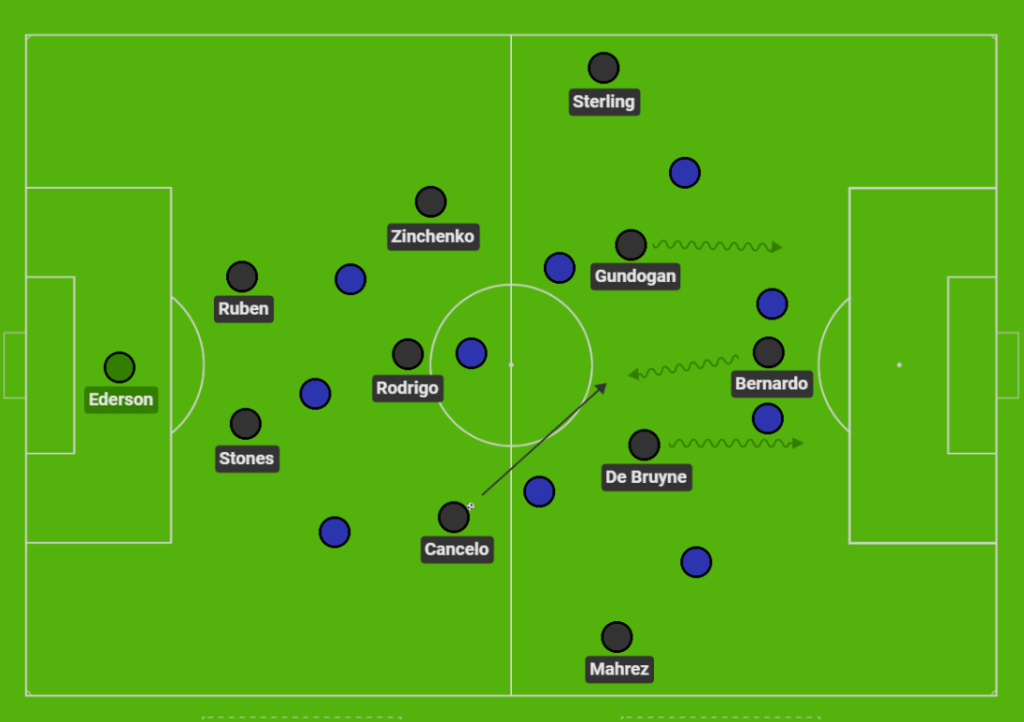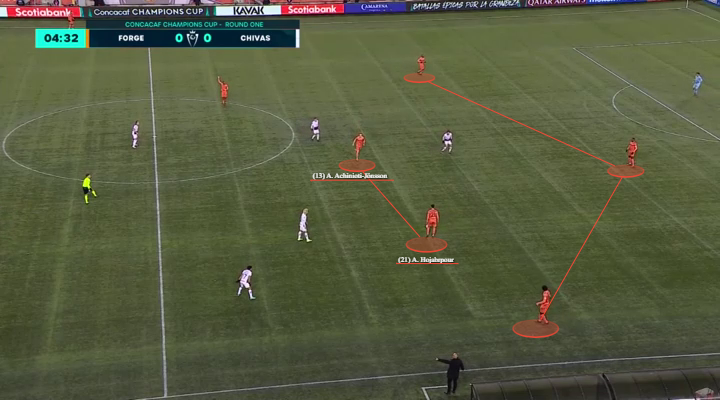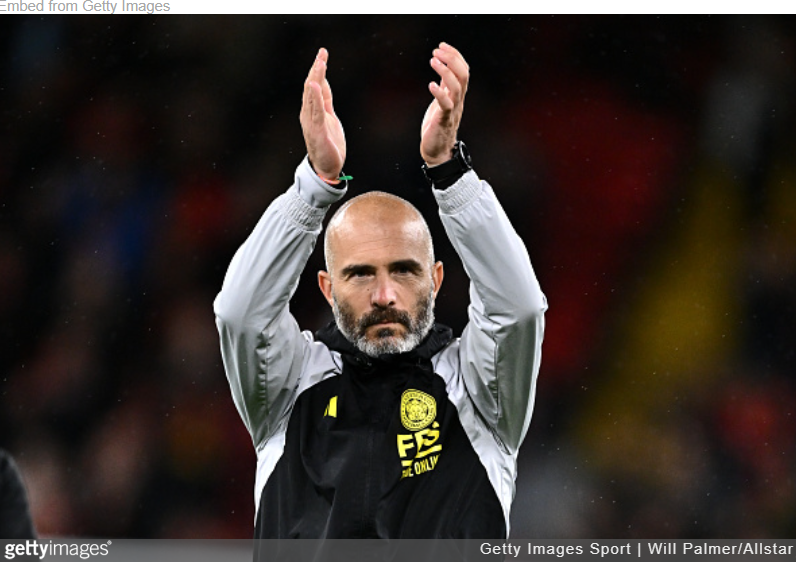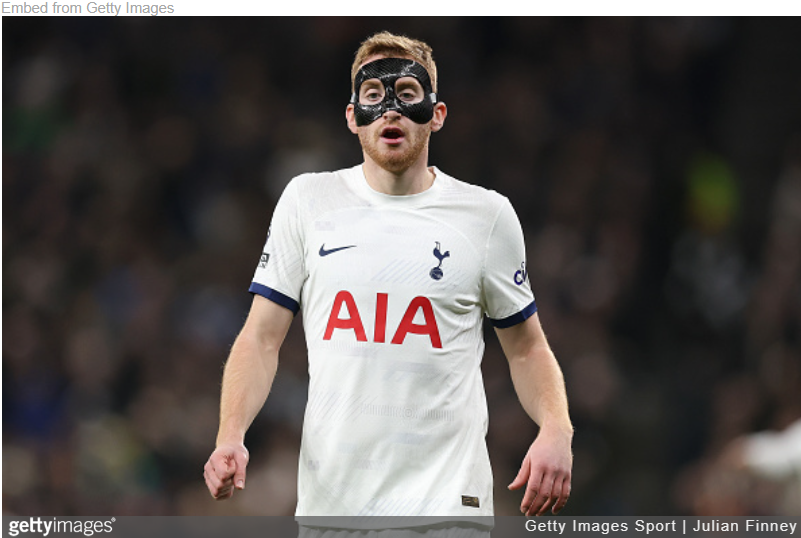After a slow start to the season, Pep Guardiola’s Manchester City are flying high and look like the most realistic title contenders as things stand. The Citizens have won their last eleven matches in all competitions, keeping eight clean sheets along the way. Interestingly enough, they’ve been playing without a natural striker for the majority of their unbeaten run, making Pep Guardiola’s side all the more tactically intriguing at the moment. With inverted fullbacks, possession-based football and goals galore, Manchester City have been a joy to watch in recent months. This is our latest Tactical Analysis into the mind of Pep Guardiola and his Manchester City team in 2020-21.
system of play: 4-3-3

As customary for a Pep Guardiola side, Manchester City haven’t exactly had a set starting eleven this season. However, in their recent resurgence, a few key figures have emerged, along with a consistent formation. First and foremost, the back-four has been fairly settled, compounded by Kyle Walker’s latest injury. Joao Cancelo’s been so good that he’s kept Walker out of the line-up and may continue to do so when the Englishman becomes fully fit again. The Portuguese fullback’s been one of City’s best players this season, contributing the most tackles and interceptions to the team. Further forward he’s also had an impact, creating 2 chances per game, to which only Mahrez and De Bruyne have created more. John Stones and Ruben Dias have also received much in the way of praise for their recent performances, forcing Aymeric Laporte to warm a spot on the bench alongside former Bournemouth man Nathan Ake. Both Stones and Dias appear to be natural leaders, and so City haven’t missed players like Fernandinho and Kyle Walker as much as they might have done last season. Kyle Walker’s played twice as many matches as Oleksandr Zinchenko, City’s best left-back, but that might change now given the form of Cancelo on the right and Zinchenko’s current fitness. Ederson Moraes has retained his place in goal, keeping eleven clean sheets so far this campaign. Ruben Dias has also been part of the team for all eleven of those clean sheets, acting as City’s most consistent defender in his first season at the club.
Embed from Getty ImagesAhead of the back-four, Rodrigo’s finally fulfilling his Fernandinho promise, but has been massively helped by his partnership in midfield with Ilkay Gundogan, an excellent ball-playing midfield maestro. With a natural ‘6’, ‘8’ and ’10’ in their lineup, City can chop and change their 4-3-3 to seamlessly transition into a 4-1-4-1, 4-2-3-1, or their 2-3-5 with inverted fullbacks as part of the ‘3’. That natural number ’10’ in their line-up also happens to be City’s best player, Kevin de Bruyne, who himself could play anywhere on the pitch to aid in their title quest. The Belgian international has scored 3 goals with 10 assists so far, creating 3.2 chances per game. Only Villa’s Jack Grealish has created more, although City have been better finishing off De Bruyne’s chance creations than Villa from their captain.
Embed from Getty ImagesGuardiola’s front three has been less consistent, including nine different players fulfilling the role as the striker during matches in the league this season. Gabriel Jesus hasn’t had much of an impact in his 11 matches, scoring just 2 goals. His lack of goal-scoring form and the quality that City has all over the pitch has meant that Guardiola’s deployed a ‘false nine’ more often than not this season. Ferran Torres, Bernardo Silva, Kevin de Bruyne, Raheem Sterling, Phil Foden and Riyad Mahrez have all played the part, and any of them could have been chosen in our mock formation of the team above. Phil Foden’s picking up more and more game time lately, but he’s still finding it hard to start more matches than players like Raheem Sterling and Riyad Mahrez, who remain constant threats on the wings. Ferran Torres has had a positive start to life for the Sky Blues, but 2 goals in 12 matches in the league probably means the 20-year old won’t be a striker for too much longer in his career. As a result we’ve gone with Bernardo Silva up front, who can also play as a Kevin de Bruyne replacement in midfield, or fulfill either role on the wing. So those are the players. Now let’s talk about how City have used their players to achieve much in the way of success this season, en route to a Premier League title chase.
inverted fullbacks
Embed from Getty ImagesIt seems nearly impossible to mention anything to do with City’s tactics under Pep Guardiola without mentioning his use of ‘inverted fullbacks’. For the unfamiliar, these are players who start in a fullback position during defensive phases of the game, but drift in-field to central areas during build-up and attacking phases. The primary reason for this tactic is to create overloads in central areas, while simultaneously stretching the field wider. Now it might seem complicated to achieve both of those things at the same time, but it’s actually quite simple how City manage to achieve both width and centrality through their inverted fullbacks. As opposition players drift in-field themselves to try and mitigate the presence of players like Zinchenko, Walker or Cancelo, more room opens up in the wide areas for City to exploit. It’s important to note here that despite the inverted approach from the fullbacks, the wingers generally remain very wide for City, hugging the touchline at every opportunity. Players like Riyad Mahrez and Raheem Sterling are excellent interpreters of space, but they are more likely to drift inside with the ball than without the ball. This is due to the importance of their width in build-up phases in particular.

As you can see in our example image, it then becomes very difficult for opposition teams to assess exactly how and where to cover the space and how to effectively pressure the ball. If for example, the left fullback on the blue team covers Mahrez, Cancelo and/or De Bruyne might have more space to advance into. If the blue central midfielder abandons De Bruyne to pressure Cancelo, a number of different players could exploit that space.
It’s also not as though City’s fullbacks are never wide in build-up phases. To say that would be untrue. On goal kicks they might even start wide and then drift in-field as City progress with the ball, or they may invert one at a time, attempting to gain an overload on one specific wide area of the field (the opposite one from the inverted fullback). As the opposition constantly tries to regain balance and track the strange but very coordinated movements of City’s men, gaps in between the lines are always available to exploit. The likes of de Bruyne, Bernardo Silva, Gundogan and Rodri are all excellent when it comes to finding gaps in between the lines, offering City several passing options. What this means is that the players in front of de Bruyne and Gundogan in the image above for example, have a more difficult time keeping an eye on their movement, and the defenders are forced out of position to try and make up for that. Gaps can then be created as City spread the ball out wide or centrally.
verticality & space interpreting

As mentioned in the previous section, all of City’s players are masters of the art when it comes to interpreting space. Much of that space interpreting comes in central areas, especially when they are trying to play through their opposition and find a route to goal. With the eight outfielders plus Ederson that operate in these areas during City’s build-up, no other team in the league has adopted a more vertical approach to their attack this season (29% of attacks). Even Burnley, who normally top that category due to their long-ball approach, have been bested by the Citizens in terms of verticality.
Embed from Getty ImagesTheir inverted fullbacks are critical to this verticality, which in turn opens up greater avenues for Ilkay Gundogan and Kevin de Bruyne to receive in space. City therefore have a practically fool-proof plan to engage their most talented ball-players regardless of how well the opposition covers the space. If Cancelo is unable to find de Bruyne or Gundogan in the example, he can go wide for Mahrez to put on his twinkle toe magic and find the two of them in space later on. He can also find the false nine, as the two midfield men make runs in behind. Remarkably, Ilkay Gundogan is City’s top goal-scorer so far this season, with seven. Rather unsurprisingly, de Bruyne sits top of the assist charts for his club, with ten. Therefore, City’s use of inverted fullbacks isn’t just about the fullbacks. It’s about opening up greater space in between the lines for Gundogan and de Bruyne to receive, something the team and the two players as individuals have done to a magnificent effect this season. It’s also important to note that the lack of a natural number nine has opened up more emphasis for Gundogan and de Bruyne to push forward. Both are incredibly astute at finding space, but have greater license to find space higher up the pitch and create goal-scoring opportunities due to City’s lack of a striker. Their success is both a function of their talent as footballers, but also a mechanism by which the team play without a natural goal-scorer.
defensive stability
Embed from Getty ImagesFor all of City’s intriguing positional nuisances and goal-scoring exploits as of late, what’s perhaps been most impressive has been their defensive stability. Much in the way of praise has been thrust upon City’s new Portuguese signing Ruben Dias, in addition to the re-emergence of John Stones. But City defend as a collective unit, perhaps better than any other side in the league. The fact that they’ve conceded just thirteen goals in nineteen games is absolutely outrageous and one piece of evidence to this, as is their tally of eleven clean sheets.
Embed from Getty ImagesThe modern day centre-back as someone who is both robust and solid in the air, while simultaneously being good with the ball at their feet, describes City’s centre-backs in a nutshell. In fact it even describes their fullbacks, extending to the slight Oleksandr Zinchenko who’s won more aerial duels per ninety than Walker and Cancelo combined. The Sky Blues have impressed when defending set-pieces, but perhaps most crucially have massively improved in transition up against counter attacks. Five of their goals conceded this season came in a single match – a 5-2 defeat to Leicester City. Most of those goals were down to individual errors, penalty giveaways and a lack of ability to cope with Leicester’s counter-attacking play. Since then, they’ve conceded just seven more times in seventeen games. Importantly, not a single member of the back-four that we’ve illustrated in our example images were present for that match. This points to just how organized they’ve been under the influence of Stones and Ruben Dias in particular, given Cancelo’s higher starting position and Zinchenko’s lack of games until recently. But again, City defend as a unit. Cancelo’s made the most tackles and interceptions per game, often winning the ball back in central areas before opposition sides are able to exploit wide areas or even reach Stones and Dias. Zinchenko and Rodri are also excellent ball-winners and rarely ever find themselves exposed. I’ve spoken about the Ukrainian defender in the past (Oleksandr Zinchenko – Tactical Analysis), and I’m still a massive fan of his overall play. Only Ederson has been dribbled past fewer times per game this season than Zinchenko at City (0.2). Stones is able to match the Ukrainian in that regard, but the likes of Walker, Dias, Laporte and Rodri can’t compete.
As a unit, City have also tweaked a few key things to their defensive structure. They’ve cooled their tactical fouling approach used more heavily in previous seasons, opting instead for greater positional caution. They’ve also successfully defended crosses and stopped crosses from happening altogether, defending the wide areas exceptionally well in transition. Again, this is despite a very vertical approach in possession and playing with inverted fullbacks. In longer spells without the ball, their 4-3-3 shape is also evident, as the fullbacks regain a wide position and the central attacking midfielders drop in alongside Rodrigo. Even in a 4-2-3-1, this defensive 4-3-3 shape may remain as de Bruyne drops in to the midfield line. With all of this combined together, they hold the best defensive record in the league.
playing out from the back
Embed from Getty ImagesPep Guardiola’s teams always have a strong desire to play out from the back, and have done so over the years in various ways. Manchester City’s key method of build-up is inverted fullbacks, as already discussed. But it’s important to expand on the other key members and areas of the pitch involved. With the fullbacks often abandoning their wide position, it’s important that the central diamond of Ederson, Stones, Dias and Rodrigo keep hold of the ball. The process by which the fullbacks invert isn’t omnipresent, and so there needs to be a period of time in which City knock the ball around and allow their fullbacks to garner centrality. Pep Guardiola has a widely talked about philosophy that states it takes about fifteen passes for a team to unbalance the other. City don’t rush forward with long passes over the top. Instead, they keep hold of the ball, with all eleven players in constant cahoots over where to exploit space. One of Guardiola’s other philosophies is that there cannot be more than two players occupying the same vertical channel. Jonathan Wilson wrote a great, tactically complex article about this in The Guardian back in 2018. The central premise is that as one player moves in-field or out wide, another may need to react by doing the opposite. The depth that City achieve in build-up phases is also important, with all eleven players in relatively close proximity to the ball and in a reasonable enough position to receive should they be required to. Guardiola’s players are constantly aware of not only where the space is to exploit their opposition, but also where the space is based on the movement of their teammates around them.
Embed from Getty ImagesAs expected of a Pep Guardiola team, Manchester City boast the most impressive passing and possession statistics of any team in the league. They’ve kept 62% of the ball in league matches this season, completing 89% of their passes and 634 passes per game. But that hasn’t stopped them from a progressive possession approach, scoring 36 goals in 19 matches, in addition to taking the most shots per game (3.6) in the league. Regardless of the amount of possession in their own end, the Citizens are fantastic at creating chances and making the most of their time on the ball, while still respecting their fifteen pass dogma. Amongst the top five passers in the league in terms of passes per game (minimum ten appearances), City have three of the top five. Unsurprisingly, it’s the trio who often adopt the lowest position on the field (other than Ederson). That is – John Stones, Ruben Dias and Rodrigo. Only Thiago Silva has made more passes per game than Stones (88.4), while not a single other player has accumulated a higher passing percentage than the former Everton man in the league this season (94%). Ruben Dias sits third in that category and fifth in passes per game, while Rodri holds the other spot outside of the podium, behind Liverpool’s Jordan Henderson.
Embed from Getty ImagesAlthough all three are exceptional passers and progressors of the ball, they are also excellent defenders, capable of winning duels aerially and putting a foot in to win possession back for the Sky Blues. Aymeric Laporte is perhaps the most exceptional of all City’s players in the air, but this hasn’t been dearly missed this season as a result of the presence of the other three. This is where a player like Jorginho or Pierre-Emile Hojbjerg might not give City the same degree of presence that Pep Guardiola wants from his number six. For all they offer in the build-up, they would also have to offer a significant aerial presence and a certain dynamism in transition to play for Guardiola. Jorginho doesn’t have either attribute, while Hojbjerg is weaker in the air, albeit adept in transition. The position that Rodrigo fulfills and Fernandinho held before him, is therefore a very difficult one to fill. It needs to be a player with a myriad of talents, including on-the-ball intelligence, astute awareness of how to cover space in transition, and an aerial presence. Rodri is one of very few players in the world who possesses all three of those attributes, and so it’s no mystery why City made the decision to sign him from Atletico Madrid back in 2019. Expanding on the Spaniard, the main reason why his possession percentage is lower than that of Dias and Stones is that he is more likely to try out a dangerous, longer pass. No City player has completed more per game, despite seven others attempting more per game. This makes the 24-year old (yes, he’s only 24), another weapon for City to bypass the opposition’s press or spread the ball into wide areas earlier than expected.
concluding thoughts
Embed from Getty ImagesManchester City have been one of the most tactically intriguing Premier League outfits since their expensive take-over, but that’s been amplified by the arrival of Pep Guardiola to the club. Finishing second place last season was seen as a massive underachievement despite Liverpool’s overwhelming success, and now it’s Guardiola’s side who are back on top this time around. With some crucial games coming up in the next few weeks, Manchester City could begin to run away from the rest of the pack if they continue their impressive unbeaten run. But even if they don’t, you can expect to watch some tactically intriguing football, including inverted fullbacks, exceptional build-up, and smooth defensive transitions to win the ball back quickly. As if it were even possible, Manchester City have improved this season under Pep Guardiola, despite not having a natural number nine in the side for the majority of their games. The manager deserves an immense amount of credit for this, and appears to be rewarding the club for showing faith in him with a new contract back in November.
So there it is! A tactical analysis of Pep Guardiola’s Manchester City. Be sure to check out more of our Tactical Analyses, including the latest on everything Thomas Tuchel. To read more about Pep Guardiola, you might also be interested in checking out our 2019-20 analysis of Manchester City. Finally, to never miss an update also be sure to give us a follow on Twitter @mastermindsite. Thanks for reading and see you soon!
You might also enjoy…
-> Pep Guardiola – Manchester City – Tactical Analysis (2019-20 Edition)
-> Jose Mourinho – Tottenham Hotspur – Tactical Analysis (2020-21 Edition)
-> Jurgen Klopp – Liverpool – Tactical Analysis (2020-21 Edition)
Finally, if you’re interested in Football Manager, be sure to check out @RDFTactics‘ latest video using this analysis as a centerpiece script.
PURCHASE OUR 4-3-3 GAME MODEL EXAMPLE –
They are not to be taken literal, although ideas can certainly be taken from this resource and implemented within your own team’s system and style of play. This game model example showcases what Rhyspect FC looks to do in each third of the pitch in all three defensive phases, and all three attacking phases. The game model also provides a brief look into set-pieces and player characteristics.









37 thoughts on “Pep Guardiola – Manchester City – Tactical Analysis (2020-21 Edition)”